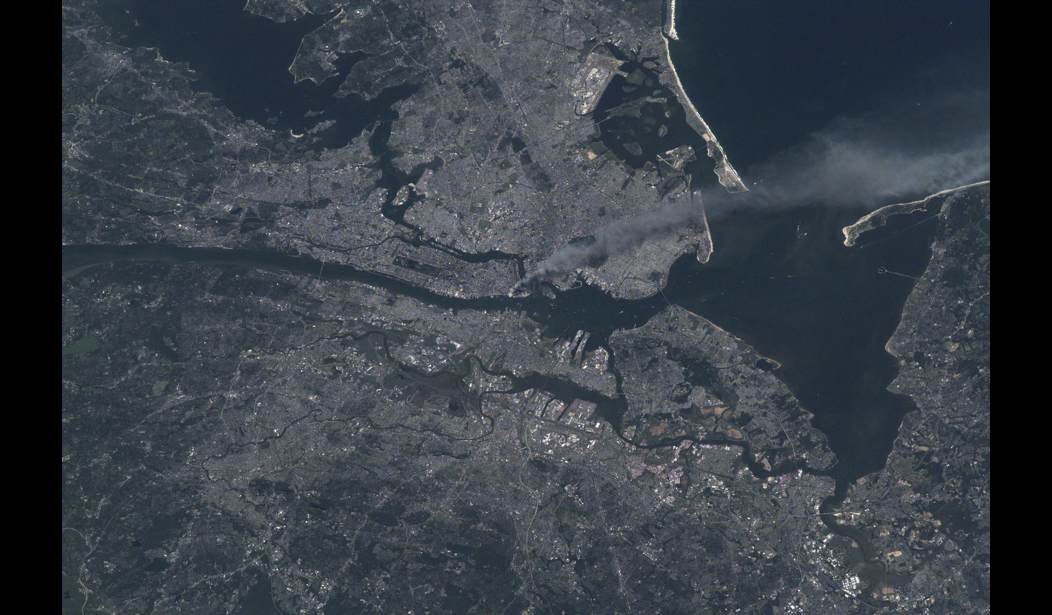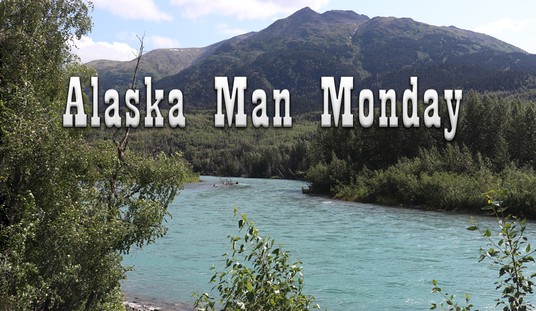Twenty-three years ago today, Paula Pluta’s living-room couch sat in front of the family's large front window. Every morning, she could sit there and contemplate the peaceful rural Pennsylvania landscape across the road – the modest hickory forest and the large hayfield where deer romped daily.
It gave her great peace to see the seasons come and go out there. Spring was her favorite, with new life abundant. But Fall was falling that morning, leaves changing color, the calves were growing quickly into adulthood.
She was calmly watching the serene scene when a giant silver airliner suddenly filled the window. It flipped upside-down. And plummeted behind the trees.
Immediately, the scene was overwhelmed by an immense yellow-orange fireball fueled by tons of kerosene. An explosive roar shook the house. A giant black plume thrust into the sky.
Forty-four innocent people were on that plane. They found less than 600 pounds of human remains.
The vivid memory of that 9/11 was so seared into Paula’s disbelieving eyes that the couch no longer sits by the window. She rarely looks out there anymore. And as she described the events of that awful morning six months later, she stood with her back to the window.
Paula Pluta was just one of many Americans that I talked with at all three 9/11 crash sites for a series of editorials in the Los Angeles Times suggested by a wise editor. Now, the results of the travels for those pieces become the 22nd in a series of RedState Memories from my years as a journalist. Their links are all below.
It was a moving week doing all that reporting. I do not recall tears during other assignments.
Solemn group by solemn group, we shuffled down an impromptu ramp in lower Manhattan next to St. Paul’s Chapel, where President-elect George Washington prayed for guidance.
By April of 2002, a million people had made that pained pilgrimage to the site of what once was the World Trade Center. The ramp bottom opened to a modest wooden platform where each group got 10 minutes to bear witness.
Here's what I wrote:
As they move toward the railing, eagerly curious, respectfully subdued even in New York, suddenly It spreads out before them: a vast, square cement coliseum, its depths inappropriately bathed in sunshine--16 acres of cramped Manhattan weirdly wide open, over 700,000 square feet, more than four large city blocks empty, void, gone, like the nearly 3,000 lives they contained.
Big is too tiny a word.
Something unusual happens when you actually see in person something so large, so infamous. You think you know what it looks like. But you’ve only seen pieces in photos.
In person, experiencing the scale is simply overwhelming. I had that feeling when I first saw – and heard -- Niagara Falls.
The World Trade Center site six months afterward was like that. So immense! Surprisingly noisy for a wake. Air hammers. Drills. Horns. Sirens. Huge trucks beep-beeping backward to load wreckage, debris, and that ubiquitous dust that coated everything.
Some surrounding buildings still showed gaping wounds, missing walls, desks and file cabinets in view, curtains, and papers flapping loose in the winds.
Slowly, almost surreptitiously, the visitors began taking pictures of the gaping crater to capture for themselves what had happened and to prove they were there, I think, because that scale of destruction was so far beyond any previous comprehension.
Suddenly, a policewoman shattered the silence, urging people to start leaving for the next group. But first, we moved past a long wall plastered with memorabilia and graffiti — "I miss you, Angel." "May your souls stand as tall as the towers in Heaven." "Joey — Never Forgotten."
Twenty-three years ago this morning, Rachel Decker was at her Pentagon desk searching online for rumors of a plane crashing into the World Trade Center. It was 9:37.
Outside, behind her back, a giant Boeing 757 was skimming the parking lot at 325 miles an hour, clipping off light poles. It was aiming for the southeast corner of the old structure armed with 10,000 gallons of jet fuel.
Onboard were 61 innocent souls, including three children. Ahead were 125 Pentagon workers unaware of their final seconds of life.
Unbeknownst to the three hijackers, they had chosen the worst wall of the ancient symbol of the American military to kill people. With the Oklahoma City bombing in mind, workers had just finished hardening that corner of the building against a bombing.
The plane penetrated three of the giant structure’s five concentric circles. Home to 23,000 military employees, the Pentagon had never actually met modern building codes.
It was hastily assembled during World War II on the grounds of a fetid housing project.
Because military culture is accustomed to inevitable casualties and takes pride in a can-do mindset, when I arrived, there was nothing funereal about the site of destruction. It had become a bustling, gung-ho site of construction well on the way to healing.
Very serious military dogs straining at their leashes lead heavily armed security teams around the perimeter.
The demolished area was the size of two Home Depots. It took more than a month to clear debris and conquer a toxic mold.
Some 2,300 Pentagon employees escaped the blast area alive. Reconstruction crews took lessons from them. They added extra exit stairs, hardened the columns to make the stairwells into vertical shelters.
Emergency electrical lighting was replaced with photoluminescent signs that glow for hours, like watch faces, with stored light. They were placed close to the floor where smoke doesn’t hang.
Inside and outside, workers toiled around the clock, taking no days off.
One of them was Mike Flocco, a Delaware sheet metal worker nearing retirement. A week after the attack, he transferred to the Pentagon reconstruction project to be near his 21-year-old sailor son.
Matthew perished somewhere in the area his father was rebuilding.
Spring was creeping across the land as I drove down a back road outside Shanksville, Pennsylvania. Red-winged blackbirds trilled on fences near crumbling barns. Bright yellow coltsfoot bloomed on the roadside.
I’ve been to too many scenes of tragedy over the years. Residents around most of them quickly grew tired, or even hostile, at all the outside attention. Not the final resting place of Flight 93 and its 44 mutineers.
Tiny Shanksville would not have that. Local volunteers like Nevin Lambert and Donna Glessner shouldered the responsibility that fell, literally, from the sky. They often stopped by the site, then merely a newly graveled overlook littered with memorabilia, photos, and signs blown about by a chill wind. “Angels gather here.”
The scene was an immense grassy field, a rehabilitated strip mine that became a sudden cemetery, then a crime scene, and now a national memorial. By that first spring, the actual crash crater had filled with water. A flock of Canadian geese returning home paddled peacefully there.
Paula Pluta was keeping little Steven and Marissa playing closer to home in those days. "Back then," she told me, "You could not imagine the evil that would do this. But what came out of it all, for us anyway, was just this powerful niceness of everyone, even strangers. You can't see it out there. But you can feel it in here."
And with that, the eyewitness touched her heart.
Over the initial time, thousands of visitors made the spontaneous pilgrimage just to bear witness. Two busloads of women came all the way from Minnesota. They stood silently looking at the distant scorched land. They prayed together. Then, they went home. One woman came and played her harp for an hour.
A local high school girl built a wooden bench as her class project.
If the hijackers intended to spark fear, they failed miserably. Patiently, Lambert and Glessner explained the little that’s known about Flight 93. The mystery makes the story more compelling.
Had the flight been on time, passengers would not have known of the other crashes. But a cellphone call alerted them. Remember Todd Beamer’s iconic “Let’s roll!”
The hijacked plane was headed for San Francisco but, without explanation, turned toward Washington and turned unresponsive to air traffic controllers. Were the hijackers targeting the U.S. Capitol? Or less likely the White House? Two fighter jets were dispatched to check. But they were unarmed.
The passengers clearly mutinied. Cockpit tapes revealed little except a crashing door, sounds of struggle, and someone shouting in English, “Get them!”
Slowly, the plane lost altitude over Ohio and Pennsylvania. Did the passengers take over? Were they trying to land in the field? Did they crash on purpose? Why did it flip?
Regardless, they became heroes.
That afternoon, I accepted the silent invitation of the girl’s new bench and looked out on the healing field for a long while. I think it began raining and blowing during my stay. A woman I did not know sat down next to me and stared out, too. We never spoke a word.
They did not seem necessary.
This is the 22d in an ongoing series of personal Memories. Please share yours in the Comments. Links to the others are below:
The Glorious Nights When I Had Paris All to Myself
Inside Political Conventions - at Least the Ones I Attended
>Political Assassination Attempts I Have Known
The Story a Black Rock Told Me on a Montana Mountain
That Time I Sent a Message in a Bottle Across the Ocean...and Got a Reply!
As the RMS Titanic Sank, a Father Told His Little Boy, 'See You Later.' But Then...
Things My Father Said: 'Here, It's Not Loaded'
The Terrifyingly Wonderful Day I Drove an Indy Car
When I Went on Henry Kissinger's Honeymoon
When Grandma Arrived for That Holiday Visit
Practicing Journalism the Old-Fashioned Way
When Hal Holbrook Took a Day to Tutor a Teen on Art
The Night I Met Saturn That Changed My Life
High School Was Hard for Me, Until That One Evening
When Dad Died, He left a Haunting Message That Reemerged Just Now
My Father's Sly Trick About Smoking That Saved My Life
His Name Was Edgar. Not Ed. Not Eddie. But Edgar.
My Encounters With Famous People and Someone Else
The July 4th I Saw More Fireworks Than Anyone Ever
How One Dad Taught His Little Boy the Alphabet Before TV - and What Happened Then













Join the conversation as a VIP Member